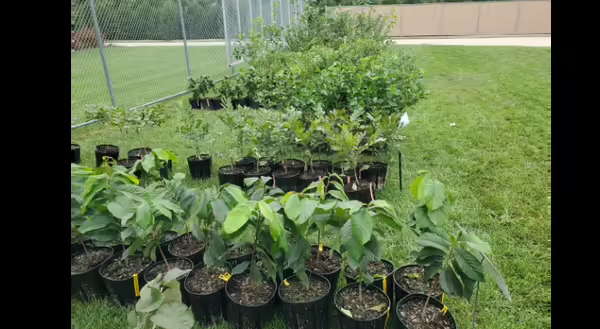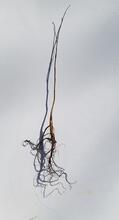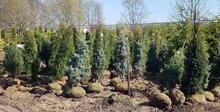
Fall is an ideal time to plant trees and shrubs in the landscape. Since winter dormancy is right around the corner, it’s a low stress time to install woody plants. I always try to wrap up my fall plantings by about Thanksgiving, but plants can actually be installed anytime up to the point when soil freezes.
However, gardeners often face a number of choices when shopping around for plant materials. I am often asked for a recommendation on the best type of plant material to select. As with so many plant questions, “it all depends”, but there are some basic pros and cons to each form of commonly available plant material.
One basic assumption that holds true across the board is that larger plants are typically more stressed than smaller plants when stored as any type of plant material. I generally recommend installing the smallest size of plant material possible because its typically the cheapest, least stressed and offers the most opportunity for pruning and other cultural practices that can correct issues early in tree or shrub’s life.
Bare-Root Plants
Bare-root plants are packaged just as they sound, with the roots bare. These plants are typically lifted out of planting beds in the field with the soil removed from their roots. They are then shipped with various materials, like old newspaper, providing supplemental moisture in the absence of a soil medium. In order to travel with no soil, bare-root plants can only be shipped during dormancy, making them unavailable in the fall. However, the great variety of species available as bare-root plants makes them an excellent second choice for spring planting of specific plants that are not locally available now.
Bare-root seedlings are the most widely available form of bare-root material and they represent the smallest plants commercially available, typically shipped as one year old seedlings. However, larger bare-root plants are becoming more and more available these days, typically shipped as 3-5 ft tall saplings. I was reluctant to try these larger bare-root plants, but some nurseries are now offering hard to find plants in this form, making it a great choice when local nurseries don’t have a plant on your list. I have had great success with both large and small bare-root plants and would recommend them for spring planting.
Containerized Plants
Containerized plants are grown in pots and are available in a variety of sizes. They offer greater flexibility than bare-root options since roots are in a soil media within a portable pot, making them available almost year-round. If plants cannot be immediately installed, they can be sustained in their pots with little risk until the next planting window opens. These plants are typically sold in 3-5 gallon pots and may be anywhere from 2-3ft tall to over 6 ft tall depending on the species and nursery production methods.
Over the years, I have had the best luck with containerized plant materials and typically recommend them first for most situations. Their versatility can’t be beat and I feel like they offer the least stressed plant in the largest size. Local nurseries typically have a wide variety of species available in containers at relatively low cost. If you can’t find what you need locally, some nurseries are starting to ship smaller (1 gallon) container plants right to your doorstep, offering another great option for hard to find plants.
Balled and Burlapped Plants
Balled and burlapped (B&B) plants are typically much larger in size and much more expensive than container plants. Over the years I have moved away from these larger plants because I feel they often much more stressed than smaller containerized plants, making them a more expensive plants with greater risk of ill health from the stress of transplant shock.
Some would argue that after 10 years of growth, a smaller, less stressed container plant will be the same size or larger than a B&B plant installed at the same time. I have observed similar things in the field, which has swayed my opinion over time. The reason a smaller plant can pass up the larger B&B plant relates to transplant shock.
Transplant shock is something that all trees and shrubs experience, which typically lasts for 2-3 years following transplant, or even longer. To overcome transplant shock trees and shrubs need to expand their root system beyond the planting hole. A mature tree will typically have a root system 2-3 times wider than the spread of its limbs. When you think about that ratio and how it would measure on a newly planted tree, it takes considerable time for a transplant to develop adequate roots and overcome transplant shock.
In many cases, a smaller plant can overcome transplant shock sooner and resume normal growth. The years that a larger plant spends spinning its wheels trying to over come transplant shock can set it back enough that a smaller plant, planted at the same time, may catch up rather quickly.
On the positive side, a large B&B plant makes a much bigger visual impact on the landscape and may be the best choice in some cases. With proper planting, follow-up care and watering, most B&B plants do just fine. It just may take more years of follow-up care to bring a B&B plant out of transplant shock.
For More Information on Tree Planting….
If you are interested in adding a woody plant to the landscape, now is the time to start shopping for the perfect plant materials. For more information about tree planting and follow-up care, check out the Illinois Extension Tree Planting Guide available at: https://go.illinois.edu/TreePlantingGuide.

